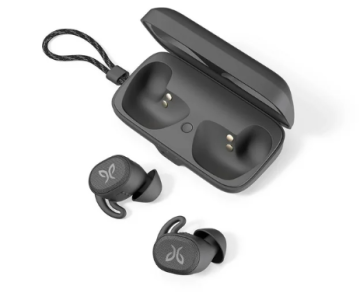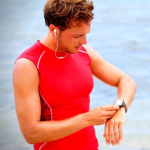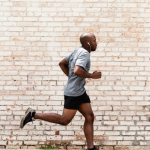Running with large breasts can be challenging, and sometimes it feels like you’re participating in a full-contact sport. The constant bouncing, weight pulling you forward, and the risk of discomfort or injury can make every run a struggle. Fortunately, with the right knowledge and support, you can alleviate these issues and enjoy a more comfortable running experience.
Dealing with Back Pain
Breasts of any size can add strain on the body, but larger breasts—such as a D-cup—can weigh between 6 and 10 kilos. This added weight can shift your posture forward, causing you to hunch and decrease the efficiency of your stride. Over time, this can lead to back fatigue and increase your risk of injury.
The majority of support for your breasts during a run comes from the straps of your sports bra, which bear a significant amount of weight. Thin straps can lead to shoulder discomfort and even numbness in your fingers, as they press against the brachial plexus nerve group.
While you can’t change the weight of your breasts, you can improve your posture and reduce back strain by strengthening your core and upper back. Exercises like rows, pull-downs, and functional core movements such as planks and side twists can help keep your body upright and more balanced while running. Strengthening the muscles around your spine will support better posture and prevent the fatigue that comes from long runs.
Minimizing the Bounce
Breast movement, or bouncing, is a common concern for large-breasted runners. The extent of this bounce depends largely on your breast size and the elasticity of the skin, which can decrease with age or frequent bouncing. The more your breasts bounce, the more likely they are to continue bouncing over time.
Research shows that, for example, a 38D cup can experience up to five inches of vertical bounce during running, while smaller breasts might only move around three inches. Even though a sports bra can’t eliminate bouncing entirely, a high-support bra can reduce it by about 50%.
The key is to make sure your breasts move in sync with your body rather than independently. Look for bras that offer the right support and minimize breast movement as much as possible during your workout.
Preventing Chafing
Chafing is another common issue for runners with large breasts, especially if your sports bra isn’t the right fit. A well-fitting bra will reduce movement and minimize rubbing. However, because larger breasts can still shift in a bra, you may need additional protection.
Anti-chafing balms or creams can help prevent skin irritation, particularly in sensitive areas like under your arms. If chafing still occurs, you can try applying first-aid tape to the affected areas before running, though it’s best to test this method on shorter runs first to ensure you don’t have an adverse reaction.
Wearing sports bras made from moisture-wicking fabrics can also help prevent chafing by reducing sweat buildup. This will not only keep your skin from becoming irritated but will also prevent sweat from pooling underneath your breasts.
Choosing the Right Running Bra
When selecting a sports bra, it’s best to try on different styles in person rather than buying online. Look for bras with high-support features like molded cups, underwires, padded straps, and multiple hooks. While support is important, comfort is also key. A bra should be comfortable enough for walking and stretching before you take it out for a run.
When trying on bras, focus on the following elements:
- The Band: A wide, elastic band will support your breasts without causing back bulges or shifting when you move your arms. Choose a bra that you can fasten on the loosest hook, so you can adjust it as it stretches with use.
- The Shoulder Straps: Ensure the straps are wide and padded to prevent digging into your shoulders.
- The Cups: The cups should fully cover your breasts without any gaps or creases. Keep in mind that your running bra size may differ from your everyday bra size, so don’t worry if the sizing is different.
- The Underwire: The underwire should sit on your ribs without digging into your breasts or underarm tissue.
- The Front Band: The center of the bra should sit comfortably on your breastbone.
For larger breasts, a crop-top compression bra may also be necessary for added support. McGhee recommends layering a high-support bra with structured cups and an underwire, followed by a compression bra to hold everything in place.
Test and Retest
After purchasing a sports bra, take a few different styles for a test run. If you’re concerned about making a mistake and wasting money, ask the retailer if you can return bras after one or two tries for a refund or store credit. After a few runs, you’ll know which styles and brands work best for your shape.
Once you find your perfect fit, write down the style number and silhouette of the bra so you can easily buy it again in the future or find a similar replacement if the brand discontinues it.
With the right sports bra and proper care, you can significantly reduce discomfort, chafing, and bouncing during your runs, allowing you to focus on improving your performance and enjoying the experience.





